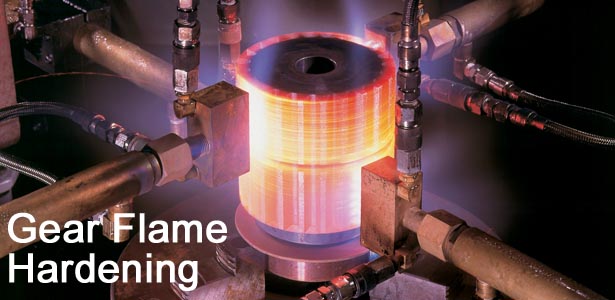CAST IRON:
Cast irons contain more than 2% carbon, which is the theoretical limit for steels. However, in actual practice, carbon content of most cast irons is between 3 to 4 %. One characteristic of cast irons (except white cast iron) is that much of the carbon content is present in free form as graphite. It is this fact, which determines, largely, the properties of cast iron. Cast iron is generally produced in coke-fired cupola furnaces by melting a mixture of pig iron, scrap cast iron and a small percentage (usually not exceeding 5%) of small sized steel scrap. Melting point of cast iron is much larger that that of steel. Most of the castings produced in a cast iron foundry are of grey cast iron. These are cheap and widely used. There are many varieties of cast iron. These are listed below :
(i) Grey cast iron,
(ii) White cast iron,
(iii) Malleable cast iron,
(iv) Nodular cast iron, and
(v) Alloy cast iron.
(1) Grey cast iron:
Grey cast iron is charecterised by presence of a large portions of its carbon in the form of graphite flakes. Although grey iron is often defined as steel containing graphite, its properties are far different from those of steel. As already mentioned, Grey cast iron is very widely used in the form of castings. In fact, it is so widely used that the term cast iron has come to mean grey cast iron. If a finger is rubbed on a freshly fractured surface of grey cast iron, the finger will get coated with grey color due to the graphite present in the cast iron. grey cast iron has good compressive strength, but is weak in tension. It is relatively soft but brittle. It is very easy to machine and the resulting surface finish is good. It is self lubricating due to the presence of graphite and has good vibration damping characteristics. Compares to steel, it resists corrosion.
Due to these properties, it is used extensively for making machine beds, slides, gear-housing, steam engine cylinders, manhole covers, drain pipes etc.,
(2) White cast iron:
White cast iron has 2 to 2.5% carbon and most of it is in the form of cementite. If molten cast iron is cooled very quickly and its chemical composition lacks graphite-promoting elements like Si and Ni, then carbon remains in combined form as . However, white cast iron does not have much use as such. It is very hard and shows white colored fracture. Highly resistance to wear. Due to its poor fluidity it does not fill the mould freely.
Only crushing rolls are made of white cast iron. But it is used as raw material for production of malleable cast iron. Used for parts subjected to excessive wear.
(3) Malleable cast iron:
Malleable cast iron is manufactured by a complex and prolonged heat treatment of white cast-iron castings. Grey cast iron is brittle and has no or very little elongation. Malleable cast iron castings loose some of grey iron's brittleness and become useful even for those applications where some ductility and toughness is required. (Note: 'molten iron' is a name given to cast iron whose structure shows part grey and white cast iron characteristics).
Malleable cast iron is of two types: 1. Black hearth and 2. White hearth. Malleable cast iron can be obtained by keeping temperature and time comparatively of high values.
It is used in differential and steering gear housing, brake pedals, tractor springs, hangers and washing machine parts.
(4) Nodular cast iron:
This cast iron is also known under the name of spheroidal graphite cast iron. If a little bit of magnesium (0.5%) is added to molten cast iron, the graphite, which is normally present in grey iron in the form of graphite flakes, changes its shape to small balls/ spheres and remain distributed throughout the mass of cast iron. This change in the shape of graphite particles has a very big effect on the properties of resulting castings and their mechanical properties improve considerably. The strength increases, yield point improves and brittleness is reduced. Such castings can even replace some steel-components.
(5) Alloy cast iron:
The properties of cast iron can be improved by addition of certain alloying elements like nickel, chromium, molybdenum and vanadium, etc. Among the alloying elements, nickel is predominating alloying constituent whose addition to the extent of 0.5 to 1.5% avoid the tendency of chilling and hard spots. Alloying cast irons have higher strength, heat-resistance and grater wear-resistance etc. Such enhanced properties increase the application and uses of cast irons. I.C. Engine cylinders, cylinder liners, piston rings etc, are made of alloy cast irons.












